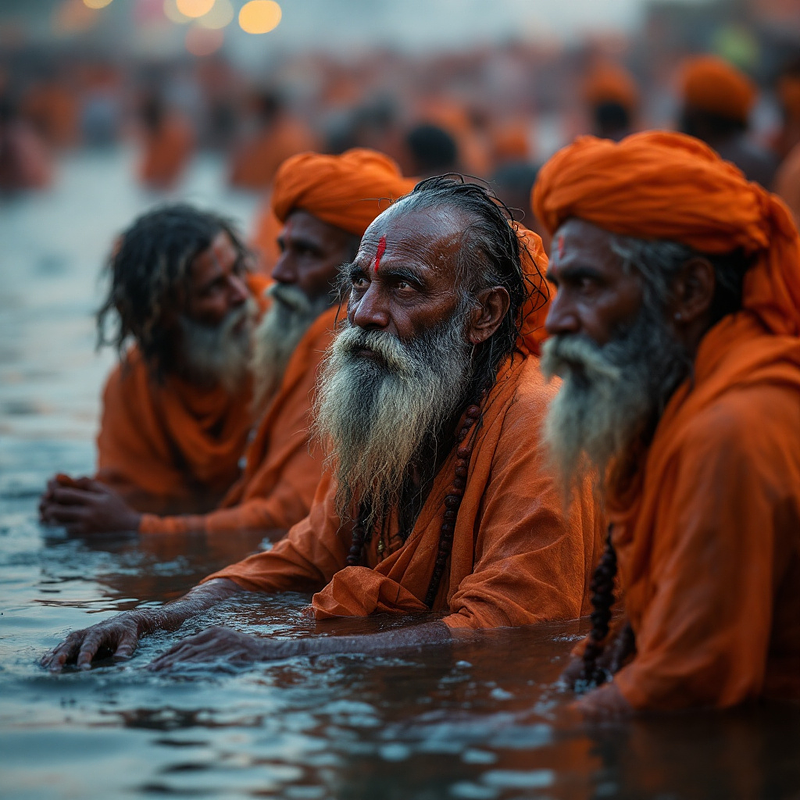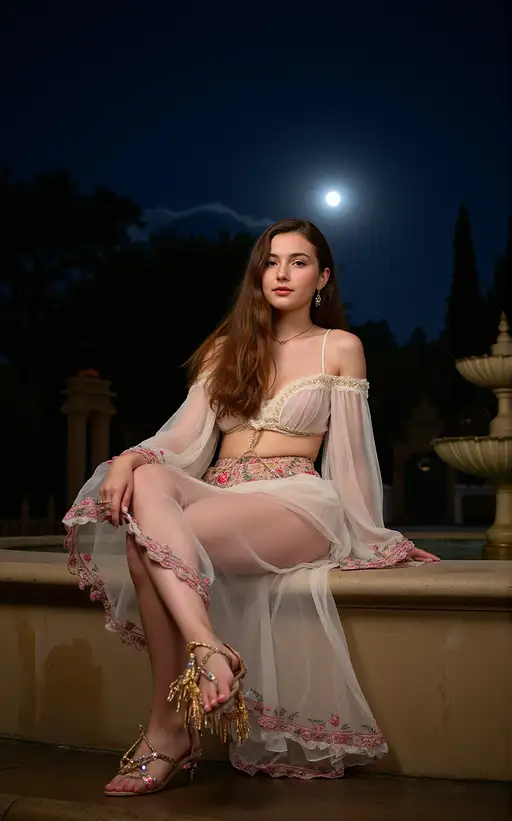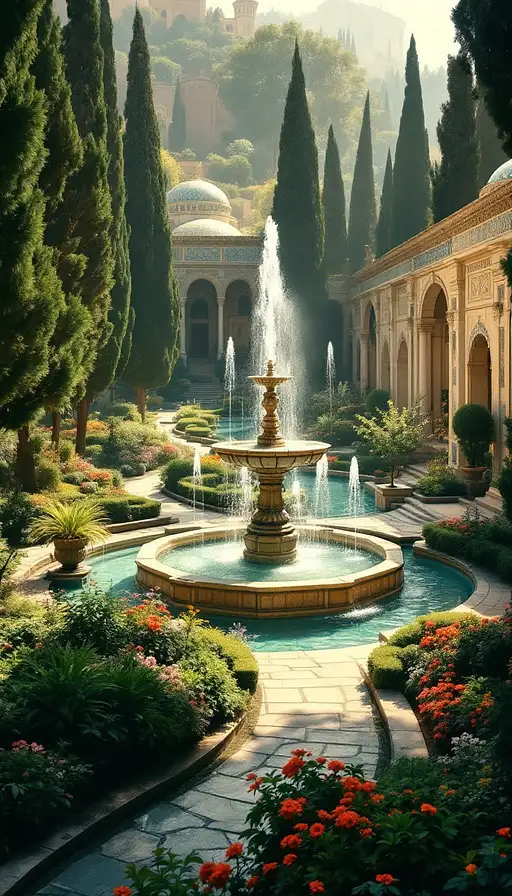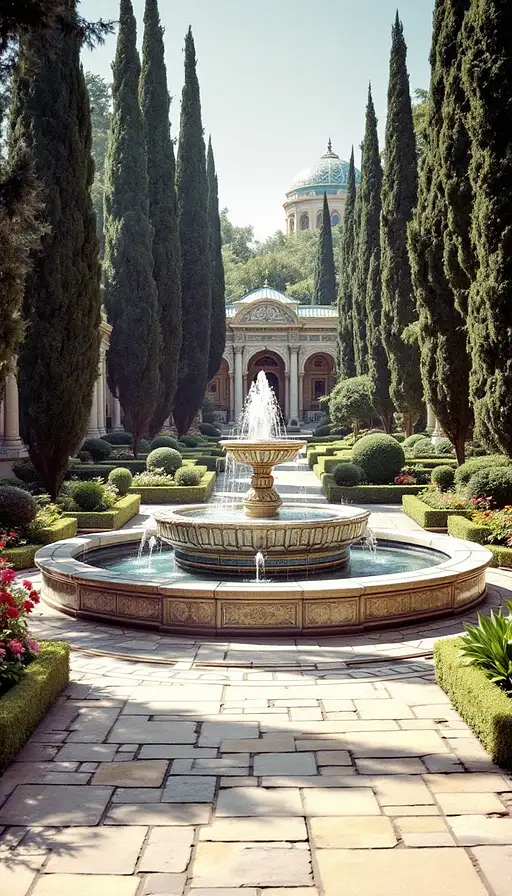
7 months ago
In the textured realism of Simon Stålenhag, a moon-worshiping priestess sits bareback atop a silver-grey horse, her naked body illuminated by the cold, blue glow of a massive full moon (1.9) that dominates the night sky. Her long, black, messy hair cascades over her shoulders and back, catching the moonlight as it contrasts against her smooth skin. Her posture is graceful yet raw, her natural curves, including a softly rounded bubble butt (2.0), accentuated by the gentle play of light across her figure. The horse stands still at the edge of a calm, reflective lake, its muscular frame and silvery coat shimmering faintly in the moonlight. The distant shore is shrouded in a light veil of smoke (1.8), giving the landscape a mysterious and otherworldly quality. The lake itself mirrors the enormous moon above, rippling slightly from a gentle breeze and the subtle movements of the horse. Surrounding the priestess are torches planted in the ground, their tall, flickering flames casting dynamic, golden light that contrasts sharply with the moon’s cold blue glow (1.9). The interplay between the warm torchlight and the cool moonlight creates a cinematic tension, with shadows and highlights moving across her figure and the horse’s sleek coat. Across the lake, hundreds of fireflies (1.8) float and flicker, their tiny golden lights adding a sense of wonder and depth to the scene. The air feels alive with movement and sound—the crackling of torches, the soft rustle of leaves, and the faint hum of fireflies blending into the serene quiet of the night. The volumetric lighting enhances the atmospheric realism, with beams of moonlight filtering through the light smoke over the lake and intermingling with the warm torchlight. The muted earthy tones of the surrounding environment blend seamlessly with the cool blues and fiery oranges of the light sources, creating a nostalgic and sacred ambiance. The scene captures Stålenhag’s signature blend of haunting realism and mystical serenity, evoking a timeless, sacred ritual.







